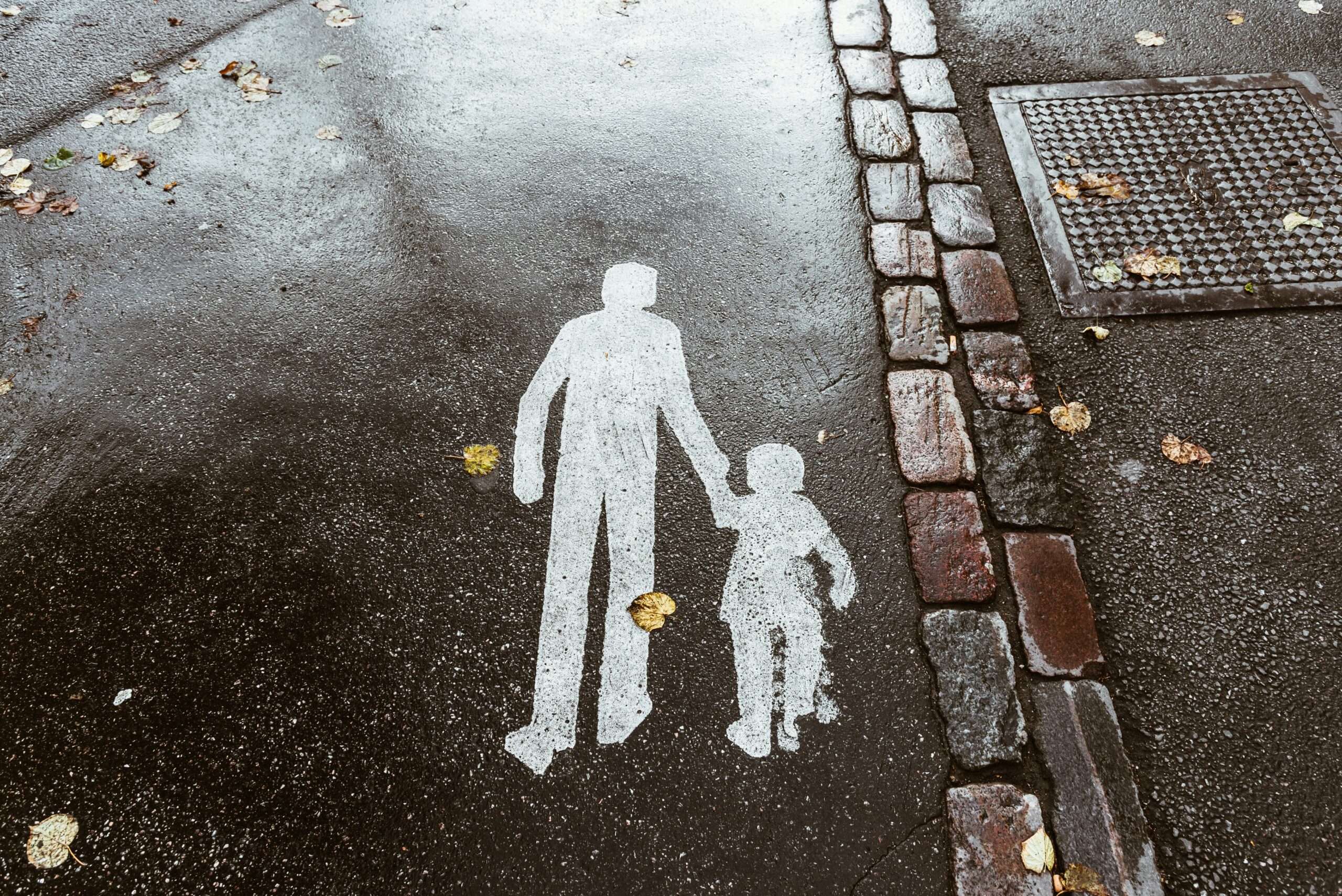While rates of alcohol and substance use among young adults have declined in recent years, the continued use among those from disadvantaged backgrounds has proven to have severe consequences. In recent years, rising stress levels, economic instability, limited access to mental health care, and exposure to environments where substance use is normalized have contributed to higher rates of use among disadvantaged young adults. The risks associated with alcohol and substance use are significantly magnified due to association with intersecting challenges such as poverty, trauma, limited educational opportunities, and systemic inequalities. Prolonged use of alcohol and drugs during these formative years can have profound and lasting impacts on both physical and mental health. Physically, early substance use is linked to increased risk of chronic diseases, impaired brain development, and a heightened likelihood of addiction later in life. Mentally, it can increase existing psychological conditions, trigger the onset of disorders such as anxiety and depression, and severely hinder emotional regulation and decision-making capabilities. As a result, alcohol and substance use among disadvantaged young adults not only endangers their immediate well-being but also significantly undermines their long-term potential and quality of life.
 Although alcohol and substance use can start at any age, it is most common during adolescence and early adulthood. Disadvantaged young adults are typically individuals, usually between the ages of 16 and 24, who face significant social, economic, or environmental barriers that hinder their opportunities for education, employment, and overall well-being. These barriers can include poverty, lack of access to quality education, homelessness, involvement in the foster care system, disabilities, and experiences with discrimination. Disadvantaged young adults are particularly vulnerable to alcohol and substance use disorder (SUD), which can significantly impact both their physical and mental health. Research details that early-adolescence alcohol use corresponds to a greatly increased risk for alcohol misuse and alcohol use disorders. The National Center for Drug Abuse Statistics (NCDAS) found that nearly 62 percent of teenagers in 12th grade have abused alcohol. A sizeable portion of adolescents and young adults engage in heavy episodic consumption of alcohol and thus put themselves at risk for numerous detrimental consequences related to their physical, mental, and social well-being. Marks and colleagues discovered that alcohol consumption is associated with numerous health problems, including liver disease, several types of cancers, respiratory tract infections, and neurological disorders. It has also been found that alcohol consumption has strong associations with young adults’ mental health, specifically with mental health disorders, including anxiety and depression. Substance use is defined as “the use of selected substances, including alcohol, tobacco products, illicit drugs, inhalants, and other substances that can be consumed, inhaled, injected, or otherwise absorbed into the body with possible dependence and other detrimental effects.” Early initiation of substance use significantly increases the risk of developing substance use disorders at later ages. The NCDAS found that 46.6 percent of teens have tried illicit drugs by the time they’re in 12th grade and that 50 percent of teenagers have misused a drug at least once. The Diagnostic and Statistical Manual of Mental Disorders (DSM) defines substance use disorder as involving patterns of symptoms caused by using a substance that an individual continues taking despite its negative effects. For disadvantaged young adults, the substance use disorder rate was nearly triple when compared to their non-disadvantaged counterparts. Substance use and substance use disorders tend to have more harmful and lasting consequences among disadvantaged young adults, as they often face compounded challenges, including poverty, limited access to healthcare, unstable housing, and lack of social support, which intensifies the physical, mental, and social impacts of substance use.
Although alcohol and substance use can start at any age, it is most common during adolescence and early adulthood. Disadvantaged young adults are typically individuals, usually between the ages of 16 and 24, who face significant social, economic, or environmental barriers that hinder their opportunities for education, employment, and overall well-being. These barriers can include poverty, lack of access to quality education, homelessness, involvement in the foster care system, disabilities, and experiences with discrimination. Disadvantaged young adults are particularly vulnerable to alcohol and substance use disorder (SUD), which can significantly impact both their physical and mental health. Research details that early-adolescence alcohol use corresponds to a greatly increased risk for alcohol misuse and alcohol use disorders. The National Center for Drug Abuse Statistics (NCDAS) found that nearly 62 percent of teenagers in 12th grade have abused alcohol. A sizeable portion of adolescents and young adults engage in heavy episodic consumption of alcohol and thus put themselves at risk for numerous detrimental consequences related to their physical, mental, and social well-being. Marks and colleagues discovered that alcohol consumption is associated with numerous health problems, including liver disease, several types of cancers, respiratory tract infections, and neurological disorders. It has also been found that alcohol consumption has strong associations with young adults’ mental health, specifically with mental health disorders, including anxiety and depression. Substance use is defined as “the use of selected substances, including alcohol, tobacco products, illicit drugs, inhalants, and other substances that can be consumed, inhaled, injected, or otherwise absorbed into the body with possible dependence and other detrimental effects.” Early initiation of substance use significantly increases the risk of developing substance use disorders at later ages. The NCDAS found that 46.6 percent of teens have tried illicit drugs by the time they’re in 12th grade and that 50 percent of teenagers have misused a drug at least once. The Diagnostic and Statistical Manual of Mental Disorders (DSM) defines substance use disorder as involving patterns of symptoms caused by using a substance that an individual continues taking despite its negative effects. For disadvantaged young adults, the substance use disorder rate was nearly triple when compared to their non-disadvantaged counterparts. Substance use and substance use disorders tend to have more harmful and lasting consequences among disadvantaged young adults, as they often face compounded challenges, including poverty, limited access to healthcare, unstable housing, and lack of social support, which intensifies the physical, mental, and social impacts of substance use.
Alcohol and substance use in adolescents and young adults can lower inhibitions and impair judgment and decision-making, often leading to risky behaviors. Researchers detail that the relationship between risky behaviors and substance use suggests that one risky behavior may lead to another. High-risk behaviors are defined as acts that increase the risk of disease or injury, which can subsequently lead to disability, death, or social problems. The most common high-risk behaviors include violence, alcoholism, tobacco use disorder, risky sexual behaviors, and eating disorders. In particular, alcohol and substance use, and risky sexual behaviors have had profound effects on disadvantaged youth and young adults. For example, certain authors have pointed out that after consumption of alcohol, an individual may indulge in various kinds of risky behaviors, such as involvement with multiple sexual partners and forgetting to use a condom while having sexual intercourse or simply using contraceptives in an incorrect manner. Steele and Joseph developed the alcohol myopia theory (AMT), which states that after consuming alcohol, an individual focuses on cues that are more rewarding than those that seem distal. The instigating thoughts for having sex are given precedence over inhibiting thoughts of the adverse consequences of risky sex. The relation between risky sexual behaviors and substance use has been widely researched. Researchers have found that substance use prior to sexual activity has been commonly shown to increase the likelihood of unsafe sexual intercourse. It has also been discovered that substance use may either precede risky sexual behavior or occur after it. Expectancy theory posits that an individual expects the experience of sexual intercourse to be enhanced and sexual inhibitions to be lowered. This makes intercourse under the influence of substances more likely to happen and be riskier.
 Alcohol and substance use in adolescents and young adults can increase the risk of suicide by intensifying feelings of depression, impulsivity, and hopelessness, while also impairing judgment and decision-making. Michael Esang and Saeed Ahmed discovered that substance use is a risk factor for both fatal and nonfatal overdoses, suicide attempts, and death by suicide. Compared with the general population, individuals with alcohol dependence and persons who use drugs have 10 to 14 times greater risk of death by suicide, respectively, and approximately 22 percent of deaths by suicide have involved alcohol intoxication. They also found that substance use independently increases the risk of suicidal behavior. Acute and chronic drug abuse may impair judgment, weaken impulse control, and interrupt neurotransmitter pathways, leading to suicidal tendencies through disinhibition. With alcohol, these authors found that drinking alcohol at an early age, binge or heavy drinking, and drinking behaviors that meet criteria for mild, moderate, or severe alcohol use disorder can all lead to increased suicidal ideation. Esang and Ahmed also found that young adults aged 18 to 25 were more likely to have serious thoughts of suicide or suicide attempts. Other research has found that there is a strong association between SUD and suicide outcomes. Regardless of an official diagnosis, drug and alcohol use pose serious risks to the mental health of adolescents and young adults.
Alcohol and substance use in adolescents and young adults can increase the risk of suicide by intensifying feelings of depression, impulsivity, and hopelessness, while also impairing judgment and decision-making. Michael Esang and Saeed Ahmed discovered that substance use is a risk factor for both fatal and nonfatal overdoses, suicide attempts, and death by suicide. Compared with the general population, individuals with alcohol dependence and persons who use drugs have 10 to 14 times greater risk of death by suicide, respectively, and approximately 22 percent of deaths by suicide have involved alcohol intoxication. They also found that substance use independently increases the risk of suicidal behavior. Acute and chronic drug abuse may impair judgment, weaken impulse control, and interrupt neurotransmitter pathways, leading to suicidal tendencies through disinhibition. With alcohol, these authors found that drinking alcohol at an early age, binge or heavy drinking, and drinking behaviors that meet criteria for mild, moderate, or severe alcohol use disorder can all lead to increased suicidal ideation. Esang and Ahmed also found that young adults aged 18 to 25 were more likely to have serious thoughts of suicide or suicide attempts. Other research has found that there is a strong association between SUD and suicide outcomes. Regardless of an official diagnosis, drug and alcohol use pose serious risks to the mental health of adolescents and young adults.
It is important to recognize evolving research. Alcohol and drug use have a profound and damaging impact on disadvantaged adolescents and young adults, affecting not only their mental well-being but also their physical health. Engaging in these behaviors during this critical stage of development can lead to long-term cognitive impairment, emotional instability, academic decline, lower inhibitions and decision-making skills, and increased risk of chronic mental and physical health issues. To combat these challenges, a multi-faceted approach is essential. This includes implementing comprehensive school-based education programs that teach the risks of substance use, increasing access to mental health services, and fostering strong family and community support systems. Policies that limit youth access to alcohol and drugs, along with early intervention and peer-led prevention initiatives, can also play a crucial role. By addressing the issue from both a preventative and supportive standpoint, society can better protect the health and future of its young people.
Jackson is a guest blogger at UITAC Publishing. UITAC’s mission is to provide high-quality, affordable, and socially responsible online course materials.
Images Used in this Blog:
- “Man in Shirt Sleeping After Drinking Whiskey” by Treedo.ST (https://www.pexels.com/photo/man-in-shirt-sleeping-after-drinking-whiskey-16926054/) is licensed by Pexels. This image has not been altered.
- “Person Holding a Rolling Paper with Marijuana” by Los Muertos Crew (https://www.pexels.com/photo/person-holding-a-rolling-paper-with-marijuana-8405551/) is licensed by Pexels. This image has not been altered.
- “Fashion Person Hands Dark” by MART PRODUCTION (https://www.pexels.com/photo/fashion-person-hands-dark-7231763/) is licensed by Pexels. This image has not been altered.




